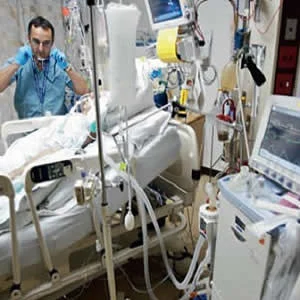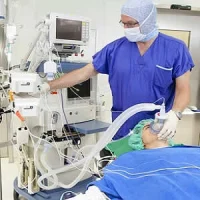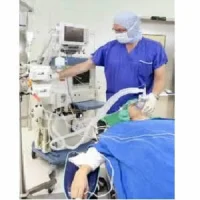The acute respiratory distress (ARDS) lung is usually characterised by a high degree of inhomogeneity. Indeed, the same lung may show a wide spectrum of aeration alterations, ranging from completely gasless regions, up to hyperinflated areas, explain Luciano Gattinoni, Tommaso Tonetti and Michael Quintel in an article published in the journal Critical Care.
"This inhomogeneity is normally caused by the presence of lung oedema and/or anatomical variations, and is deeply influenced by the gravitational forces," the authors explains.
The interest for the pathophysiology of the ARDS lung, the paper notes, derives from the need – in most of these patients – for mechanical ventilation. This technique substitutes the respiratory muscles, completely or in part, in the role of providing the energy needed to inflate the lung. "Therefore, the possible harm of mechanical ventilation derives from the interaction between the anatomical-physiological characteristics of the lung parenchyma and the mechanical power delivered to it," the article points out.
Mechanical ventilation is applied to the ventilatable fraction of the ARDS lung (the "baby lung"). The anatomical threshold is likely represented by the total lung capacity which may be reached through local pressure rises depending on the lung inhomogeneity. Within this framework, the article says, it's important to note that:
• Whatever the decrease in mechanical power – due to the reduction of whichever of its components – should decrease the likelihood of ventilator-induced lung injury (VILI).
• The best available manoeuvre to increase lung homogeneity (without causing any increase in mechanical power) is prone positioning. This is clearly indicated in patients with moderate-severe and severe ARDS, who present with the highest degree of lung inhomogeneity.
• Positive end-expiratory pressure (PEEP) has a dual effect: on one side, it may decrease lung inhomogeneity, at least in the patients in whom lung collapse can be substantially reduced. On the other hand, for a given tidal volume, PEEP increases the mechanical power and the likelihood of reaching the anatomical threshold for VILI, i.e., the total lung capacity.
The literature on VILI concentrates primarily on the possible danger of tidal volume. However, as the article explains, the determinants of mechanical power are not only the tidal volume, but also respiratory rate, inspiratory flow, and PEEP.
"In the end, decreasing mechanical power, increasing lung homogeneity, and avoiding reaching the anatomical limits of the ‘baby lung’ should be the goals for safe ventilation in ARDS," the article concludes.
Source: Critical Care
Image Credit: Rcp.basheer
References:
Gattinoni L, Tonetti T, Quintel M (2017) Regional physiology of ARDS. Critical Care. doi.org/10.1186/s13054-017-1905-9
Latest Articles
acute respiratory distress syndrome, ARDS, mechanical ventilation
The acute respiratory distress (ARDS) lung is usually characterised by a high degree of inhomogeneity. Indeed, the same lung may show a wide spectrum of aeration alterations, ranging from completely gasless regions, up to hyperinflated areas, says an arti










